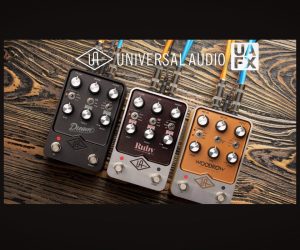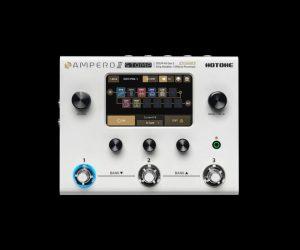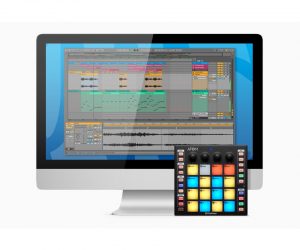
Last Word with Tom Hidley
Tom Hidley is one of the world’s most influential acousticians, with dozens of professional studios bearing his company’s ‘Westlake Room’ name in the ‘70s. AT caught up with Tom back in 2004 for a full interview. This is an extract.
The Westlake name originated from the town I was living in at the time, Westlake Village, on the Californian coast. I started the company in 1969 in my garage. Westlake was selling package electronics.
We were building entire systems. We had MCI and 3M tape machines, MCI and API consoles, and all manner of studio equipment, but we also built the studios to house those systems. By the time the company set up shop on Wilshire Boulevard in Los Angeles, I was designing the studios, our sales department was selling and packaging the gear, and our carpenters were building the rooms. “From design to downbeat” was the Westlake motto of the day.
In 1975 I sold Westlake Audio. I had an argument with the other stockholders about expansion. We had just successfully completed three new studios in Europe: one for The Moody Blues back in 1973-74; Manor Studios in the countryside near Oxford in the UK for Richard Branson; and Mountain Studios in Montreux, Switzerland for Anita Kerr in ’75. I returned to the US absolutely elated, thinking this was a new hit concept. I went back to my LA office and said, “Guys, we have to expand and open a European office.” But, hands down, everybody was against it. So I said, “All right I’m out of here. You guys own Westlake, this is the financial settlement and I’m gone.”
My new company Eastlake was primarily focused on the design, construction and supply of monitors. The reason for the change of focus was that the industry was moving so quickly; I felt that no single person or company could do it all and get it all right. I had to specialise in what I felt I did best — designing acoustic environments.
I was running Eastlake up until 1980. That’s when I sold it, retired, went to live in Hawaii and lay on the beach. But I got restless; I was always asking myself, “How could I have made my rooms better?”
For a time there, through the ’70s, each new studio construction yielded a better product than the one before. It was like peeling back the onion, each studio taught us something new. But by around 1978/’79 the acoustic development and learning curves seemed to plateau.
It’s important to remember that back then we were learning as we went — there were no books written on it at the time, so there were inevitably successes and failures. In simple terms, the rooms were often misrepresenting what the speakers put out and we couldn’t quite work out why.
It occurred to me when I was lying on the beach that the timber-framed monitor wall structure wasn’t completely transferring the speaker energy into the aural part of the room. Some of the energy was going into the structure of the walls and the floor, which meant that the structure, particularly the monitor wall, was subtracting certain frequencies from the monitors, which was obviously affecting the overall room response. So I asked myself, “How can I improve the stability and isolation of the monitor wall?” I figured the answer was mass.
I left the beach, went back to Switzerland, and into business in ’86, trading under my own name, where I immediately set about putting some of these new design criteria into the structures of my new rooms. And, sure enough, the sonic difference was obvious.
Those new rooms consisted of a wood-framed monitor wall in-filled with concrete, from the top down through the stud system to the floor. There was also an inner box for each monitor within the wall comprised of four inches of concrete. The monitor was now in a rigid wall system with 1/8-inch airspace allowing normal and requisite cabinet flexing, but encased in concrete. This meant that there was no (or minimal) transfer of low-frequency energy from the box to the wall system because the wall was rigid and stable. It’s the way I’ve done it ever since.
When you do that the bass stiffens up in the room because there’s no flop and motion on the monitor wall… You can put the palm of your hand on the wall while the speakers are pumping out 120dB SPL low end into the room and you won’t feel a thing. It’s stable, very stable.
The soffit mounting serves a two-fold process: to keep the image phase correct and also to stabilise the bottom end and isolate the speakers from the structure. I’ve always argued that flush mounting speakers is a better way to set them up than having them free-standing. It was something I learned when I worked at JBL in the ’50s. But like anything, there are good and bad ways to soffit-mount speakers.
Virtually everyone in a home studio endures parallel walls. That’s a mid band and a low-end standing wave problem. Sometimes it’s a high frequency problem, it all depends on the type of room and the angles, the distance from one wall to the other and the finishes. You can get rid of a lot of high-frequency and mid-frequency nastiness between parallel walls just by inserting a simple cotton velour drape down one of the walls, but that doesn’t change the low-end character that a parallel rigid wall system will present to the room.
Another rule of thumb is, never use monitors that are too big (low frequency-wise) for your room. If you put a monitor that goes down to 20Hz into a room that only has a 30 or 40Hz capability in wave distance, you’re going to create a huge bump about an octave above the fundamental frequency the monitor’s producing. And you’ll never get rid of that bump, because you’re introducing something into that room that shouldn’t be introduced (wavelength physics). If you’re going to build a small control room, match the monitor’s low frequency capability to the size of the room! (Half the wavelength of a room’s longest dimension should equal the maximum low frequency from the room’s monitor.)
You can size your monitor downward in frequency as long as the room possesses the dimensions to carry it.
















RESPONSES